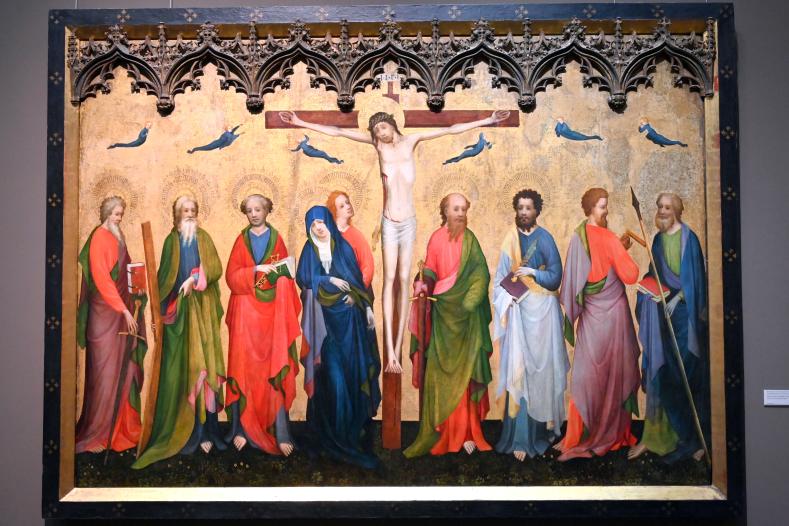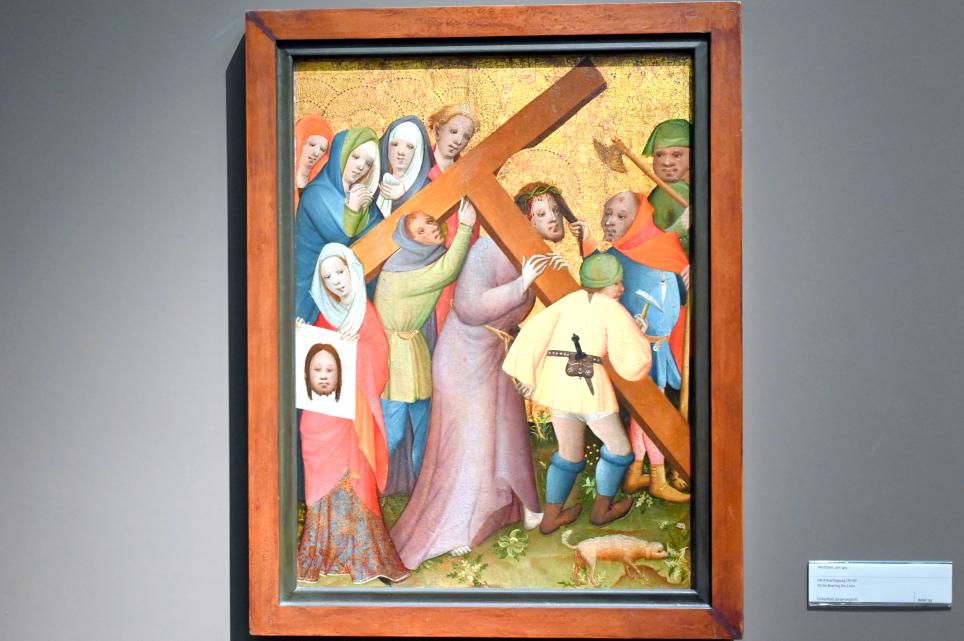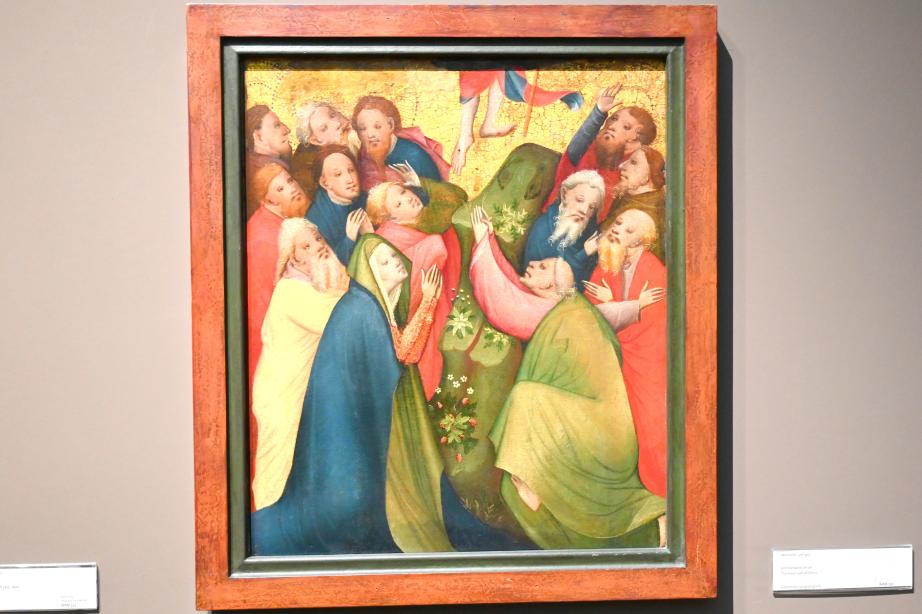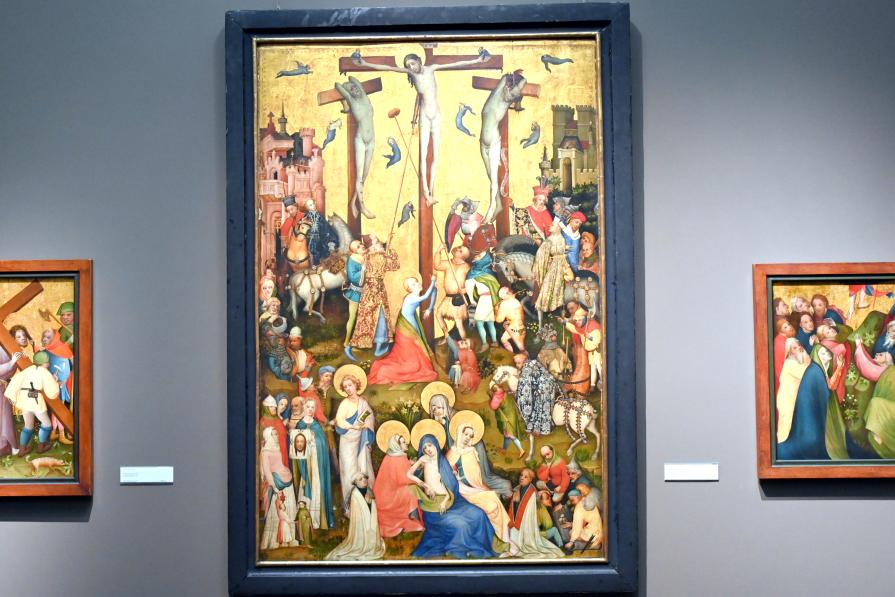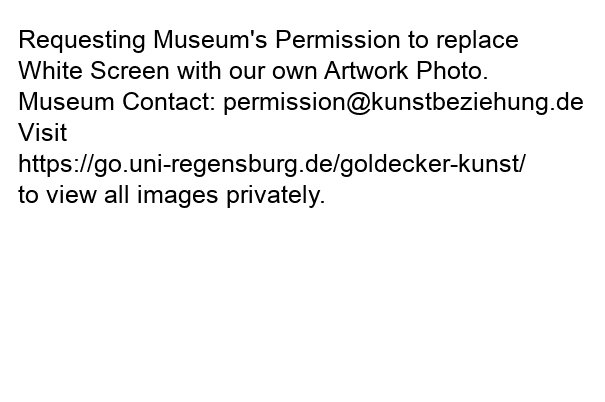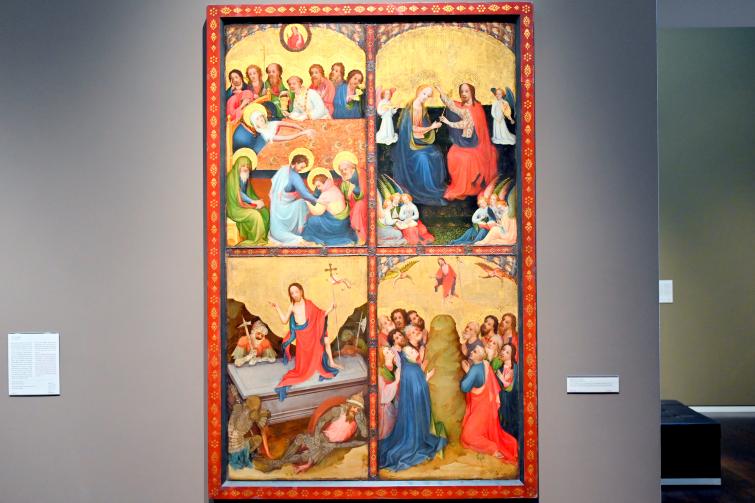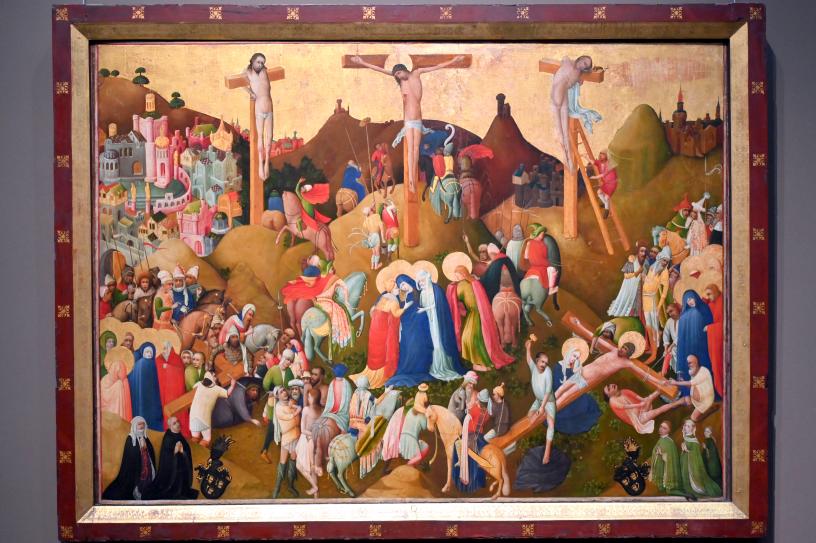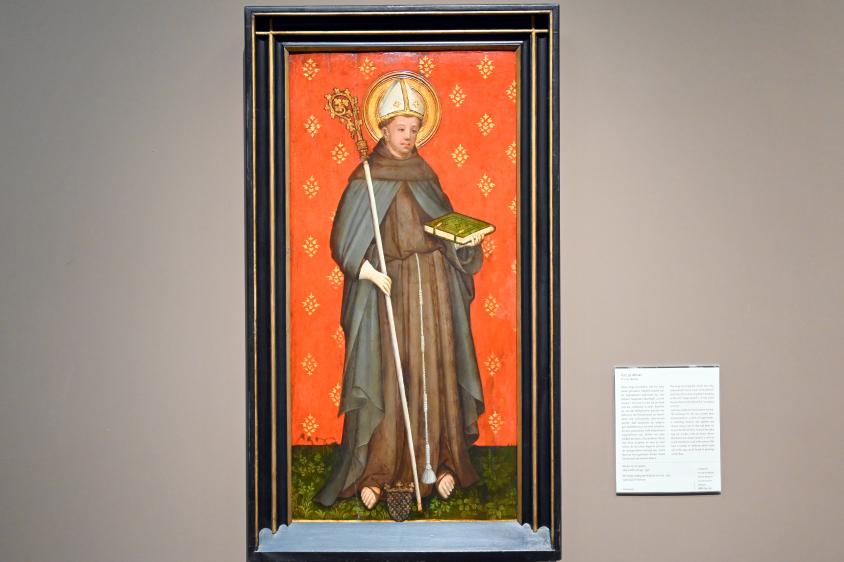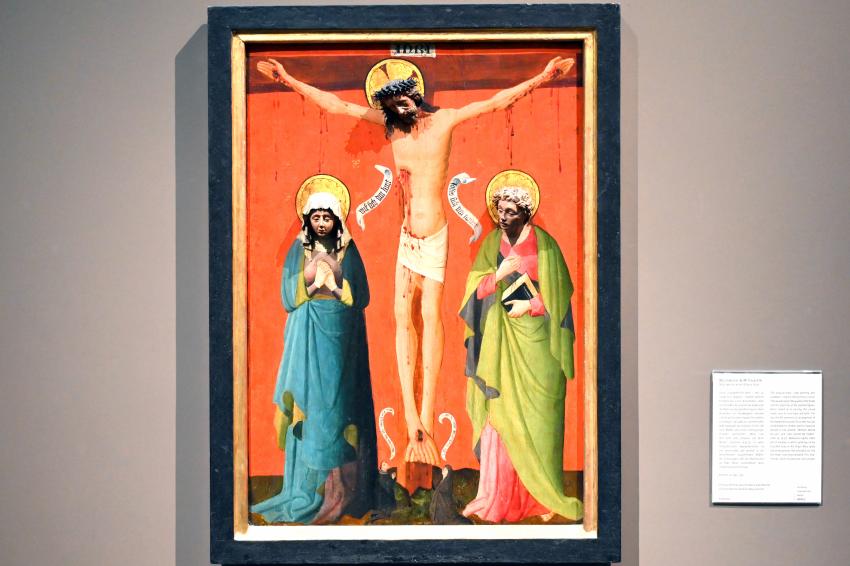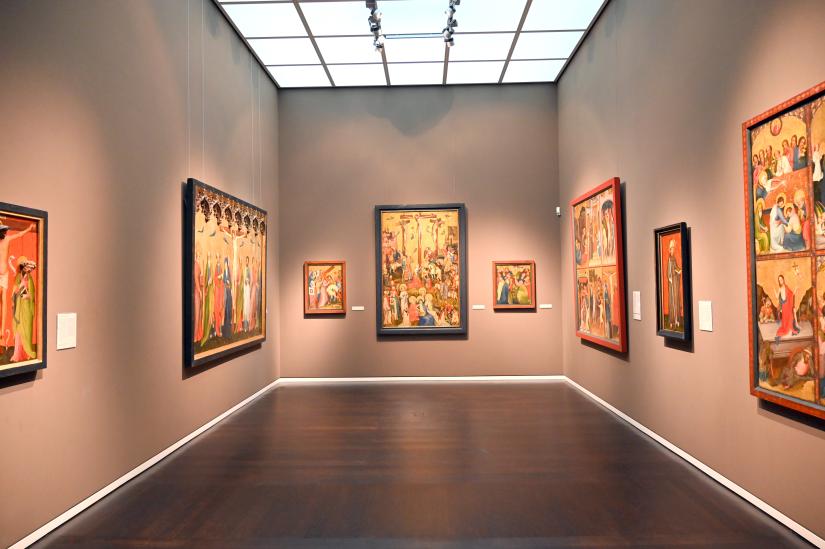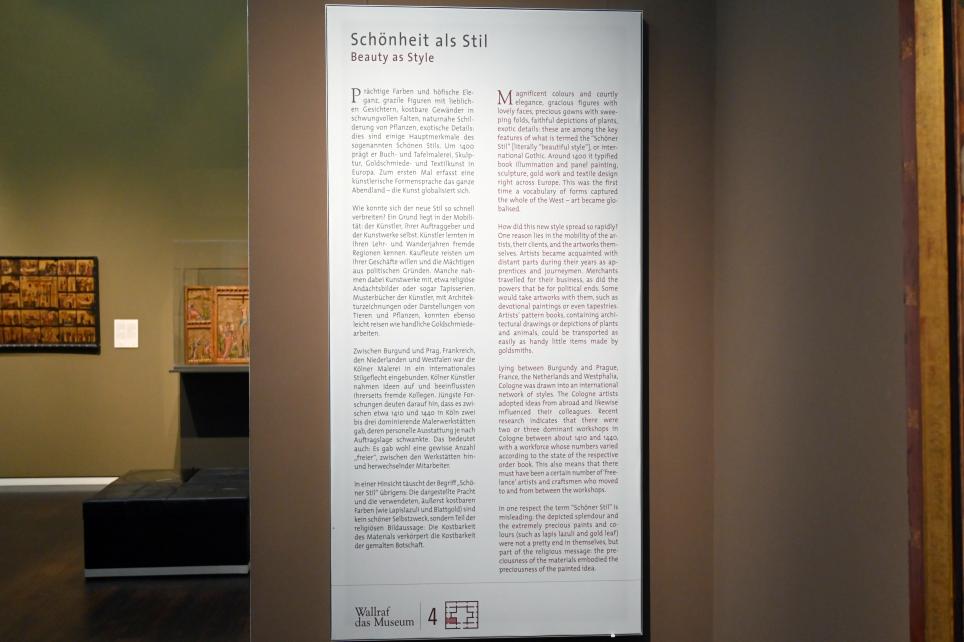Position Köln, Wallraf-Richartz-Museum
Bedeutende Künstler in Köln, Wallraf-Richartz-Museum, Mittelalter - Saal 4 (1415–1427)
Künstler in Köln, Wallraf-Richartz-Museum, Mittelalter - Saal 4
Meister des Wasservass’schen Kalvarienbergs
tätig um 1415 - 1435
Meister von St. Laurenz
tätig um 1415 - 1430
Unbekannter Künstler
Köln, Wallraf-Richartz-Museum, Mittelalter - Saal 4 (Inventar-Nr. WRM 735)
um 1415
Unbekannter Künstler
Köln, Wallraf-Richartz-Museum, Mittelalter - Saal 4 (Inventar-Nr. WRM 736)
um 1415
Unbekannter Künstler
Köln, Wallraf-Richartz-Museum, Mittelalter - Saal 4 (Inventar-Nr. WRM 353)
um 1415–1420
Meister von St. Laurenz (Zuschreibung)
Köln, Wallraf-Richartz-Museum, Mittelalter - Saal 4 (Inventar-Nr. WRM 19)
um 1420
Köln, Wallraf-Richartz-Museum, Mittelalter - Saal 4 (Inventar-Nr. WRM 20-25)
um 1425–1430
Köln, Wallraf-Richartz-Museum, Mittelalter - Saal 4 (Inventar-Nr. WRM 827)
um 1425–1430
Unbekannter Künstler
Köln, Wallraf-Richartz-Museum, Mittelalter - Saal 4 (Inventar-Nr. WRM 57)
um 1425–1435
Köln, Wallraf-Richartz-Museum, Mittelalter - Saal 4
Alle Kunstepochen in Köln, Wallraf-Richartz-Museum, Mittelalter - Saal 4
